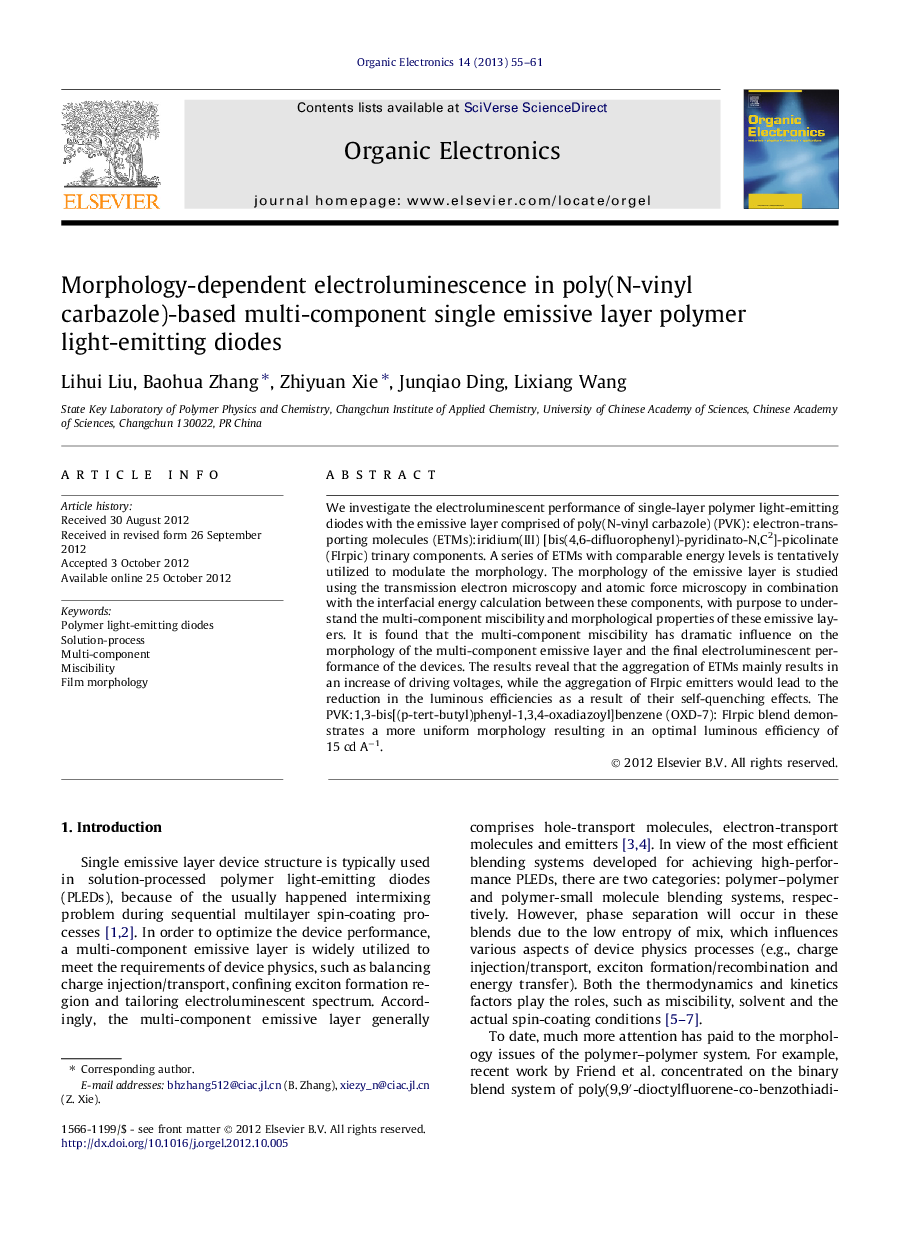| Article ID | Journal | Published Year | Pages | File Type |
|---|---|---|---|---|
| 1263935 | Organic Electronics | 2013 | 7 Pages |
We investigate the electroluminescent performance of single-layer polymer light-emitting diodes with the emissive layer comprised of poly(N-vinyl carbazole) (PVK): electron-transporting molecules (ETMs):iridium(III) [bis(4,6-difluorophenyl)-pyridinato-N,C2]-picolinate (FIrpic) trinary components. A series of ETMs with comparable energy levels is tentatively utilized to modulate the morphology. The morphology of the emissive layer is studied using the transmission electron microscopy and atomic force microscopy in combination with the interfacial energy calculation between these components, with purpose to understand the multi-component miscibility and morphological properties of these emissive layers. It is found that the multi-component miscibility has dramatic influence on the morphology of the multi-component emissive layer and the final electroluminescent performance of the devices. The results reveal that the aggregation of ETMs mainly results in an increase of driving voltages, while the aggregation of FIrpic emitters would lead to the reduction in the luminous efficiencies as a result of their self-quenching effects. The PVK:1,3-bis[(p-tert-butyl)phenyl-1,3,4-oxadiazoyl]benzene (OXD-7): FIrpic blend demonstrates a more uniform morphology resulting in an optimal luminous efficiency of 15 cd A−1.
Graphical abstractA systematic investigation on how the nanoscale morphology of poly(N-vinyl carbazole) (PVK) based multi-component emissive layer (PVK: electron transport molecules (ETM): dopant) influences its electroluminescent property is carried out. The results reveal that miscibility between PVK, ETM and dopant has a dramatic influence on the multi-component emissive layer morphology that strongly affects their electroluminescent performances. Small phase separation of PVK/ETMs and homogenous distribution of the phosphorescent emitters can effectively decrease the driving voltages and enhance the light-emitting efficiencies of the devices.Figure optionsDownload full-size imageDownload as PowerPoint slideHighlights► The miscibility between PVK and ETMs influences the multi-component emissive layer morphology. ► The miscibility between FIrpic and ETMs determines the dispersion of FIrpic in the PVK/ETMs matrix. ► Small phase separation of the PVK/ETM/FIrpic emissive layer renders low driving voltages of the devices. ► The homogenous distribution of FIrpic in the PVK/ETMs prevents self-quenching and ensures high light-emitting efficiency.
